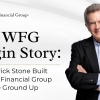

Renting can certainly be a solid choice while you’re saving for a down payment or repairing or building credit to obtain a mortgage, but recent findings show that homeownership is still a better deal. The cost to rent is rising faster than any other time in the last six years, according to the Bureau of Labor Statistics, while rental inventory stands at a 20-year low.
There is great benefit in knowing what types of loans are available that might assist buyers who require a low down payment so that they can become new homeowners in 2015.
In a recent press release, Zillow added to the conversation: “Over the past 14 years, rents have grown at twice the pace of income due to weak income growth, burgeoning rental demand, and insufficient growth in the supply of rental housing. This has created real opportunities for rental housing owners and investors, but has also been a bitter pill to swallow for tenants, particularly those on an entry-level salary and those would-be buyers struggling to save for a down payment on a home of their own,” said Zillow Chief Economist Stan Humphries. “Next year, we expect rents to rise even faster than home values, meaning that another increase in total rent paid similar to that seen this year isn’t out of the question. In fact, it’s probable.”
Although the increasing cost to rent and lack of inventory might nudge renters into buying a home, the National Association of Realtors points out that tight credit standards, large student debts and the growth of multigenerational households are contributing to the lowest number of first-time homebuyers in decades. Additionally, we are told that rising rent prices mean less money to put away for that down payment.
Even with these difficulties, first-time homebuyers are projected to be more active in the 2015 housing market. These concerns about rising rents and other debts are a concern to first-time or new buyers, but we are also seeing options for homebuyers today. For example, new conventional loan guidelines create an open door for homebuyers even as the Federal Housing Administration has changed its fees and loan structure, making both less buyer-friendly.
Amy Buynoski, a mortgage banker and the vice president of Fidelity Bank, says that the benefit to Fidelity’s program “is it is not FHA, and the buyer can put 3 percent down, and it can be a gift or grant. Mortgage insurance will come off once they have the 20 percent equity, unlike FHA. There is also no upfront funding fee at closing. Credit score requirements are relatively low at 640, but this is subject to approval (based on the body of the credit and strength of the buyer). One buyer on the loan does have to be a first-time homebuyer or have no homeownership in the last three years, and they do have to take a class.”
Another option that’s not always available in metro areas but can be found within rural residential markets is the USDA rural development (RD) loan. There is no mortgage insurance with an RD loan, but like a loan through FHA, there is an upfront funding fee at closing, and it is a 100 percent loan. These are for purchase loans on primary residential properties only, and the loan has a nice renovation component that is much simpler than FHA’s PowerSave Pilot 203(k) loan program in case the buyer would like to make some updates or upgrades to the property after closing.
The downside is that it’s possible to make too much money to qualify, and the property must be eligible for the loan. According to Jennifer Sims of Homestar Financial, “FHA and USDA (RD) are both great loans for first-time and second-time homebuyers. The USDA is a true 100 percent loan in eligible rural areas if you qualify under the income limits for the county. FHA also has a great loan, which can allow gift funds for the low 3.5 percent down payment. Both allow medium credit scores with some open collections as well. The USDA loan is the loan that can allow you to get into a home for truly 0 percent down as long as the home appraises. Also, there can be a repair escrow feature on both loans. The USDA can authorize up to 10 percent or $10,000 (whichever is less) to make repairs for appraiser-required issues. And FHA has a rehab loan called the 203(k) where you can borrow between $5,000 and $35,000 for upgrades or repairs to your home.”
As noted, FHA is still the old fallback and perfect for buyers rebuilding credit; it’s a bit more forgiving of past credit indiscretions compared with conventional loan guidelines. The costs and limitations are real. Mortgage insurance is expensive, and it will never fall off the FHA loan. For someone who had a credit blemish in the past, an FHA loan might be the best route to take to get back into homeownership.
Hank Bailey is an associate broker with Re/Max Legends and a Realtor for more than a decade who provides buyer’s agent representation and seller listing services related to residential real estate.
The post Which home loans are best for new buyers? appeared first on WFG National Title Insurance Company.






